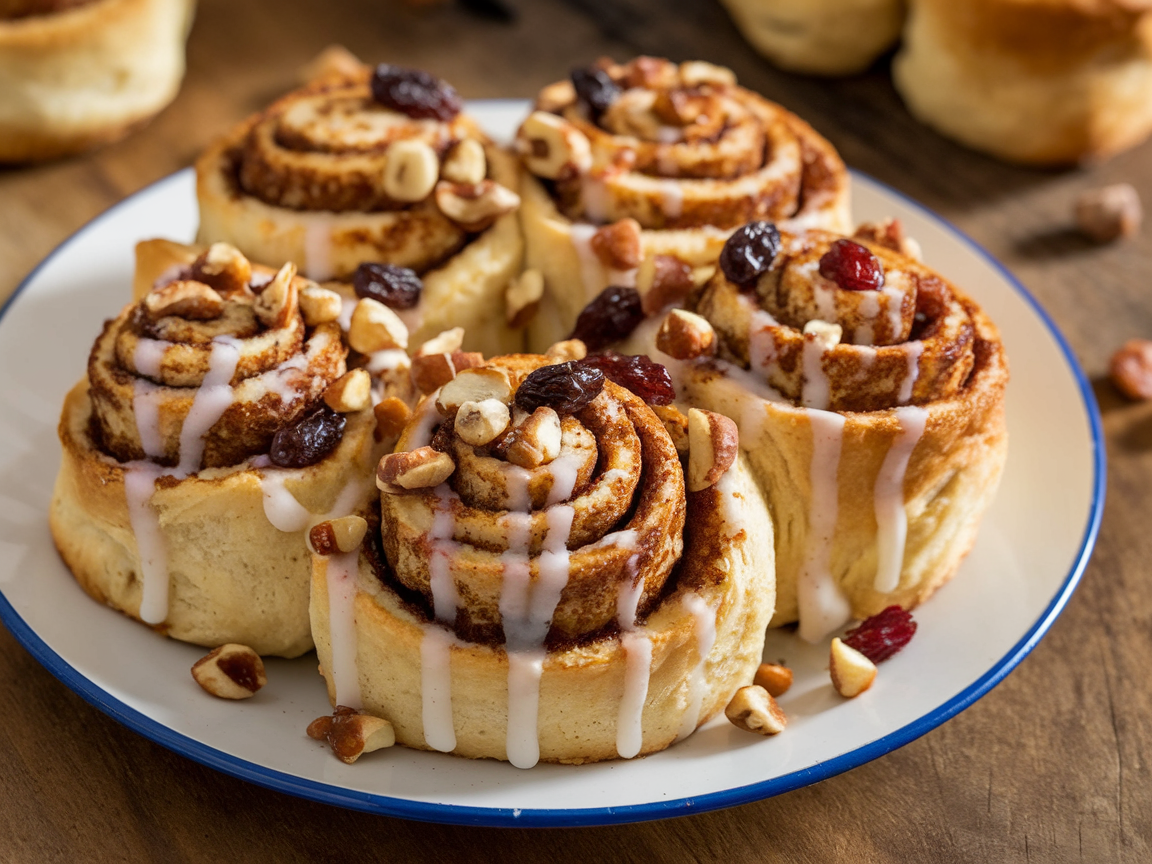Introduction to Perfect Cinnamon Rolls
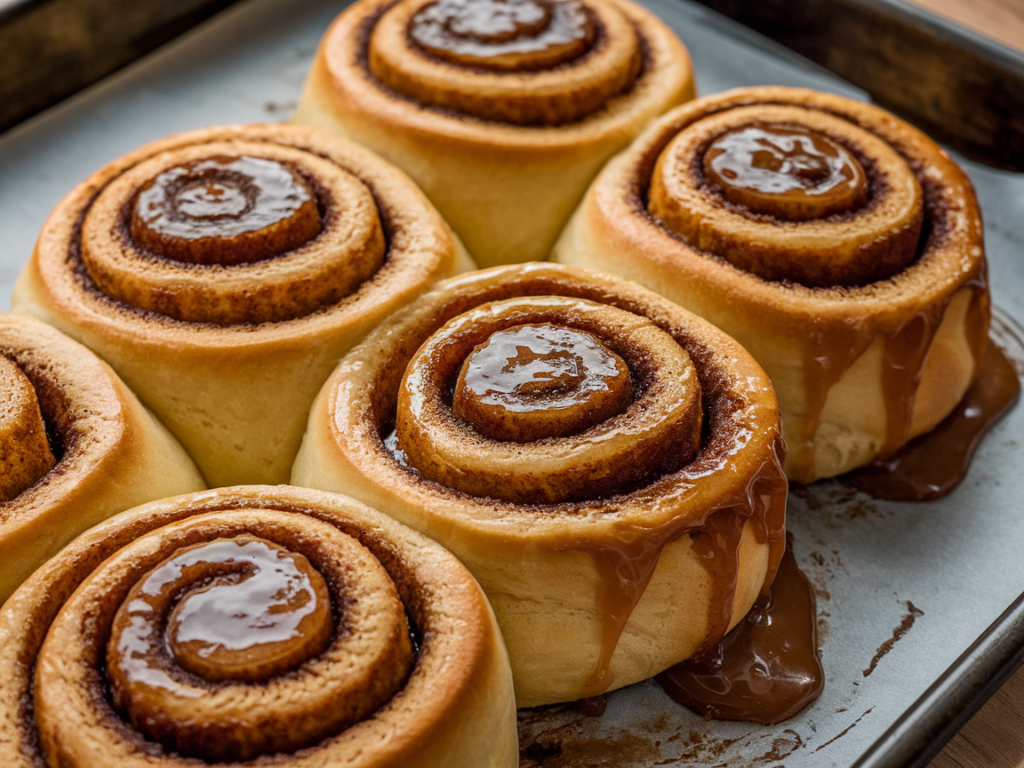
Ah, cinnamon rolls—a heavenly blend of soft, pillowy dough and sweet, gooey filling. They’re the perfect treat for breakfast, brunch, or dessert. But here’s the thing: getting those luscious fillings to stay put can sometimes feel like a game of chance. Have you ever rolled up your dough, confident you nailed it, only to find a sticky, sugary mess oozing out onto your baking sheet? Frustrating, right?
Don’t worry; you’re not alone. Many cinnamon roll enthusiasts face this challenge. The good news? With the right techniques and a bit of baking know-how, you can ensure your fillings stay exactly where they’re supposed to—inside the roll, not all over your oven. Let’s dive into the secrets of cinnamon roll mastery!
When it comes to making Perfect Cinnamon Rolls, the right techniques can make all the difference.
Common Problems When Making Perfect Cinnamon Rolls
Fillings Oozing Out During Baking
One of the most common issues is that tantalizing swirl of sugar and spices leaking out as the rolls bake. While this might create a caramelized bottom, it’s not what we’re aiming for. The filling should enhance each bite, not coat your baking pan.
Uneven Filling Distribution
Another common woe? Biting into a cinnamon roll and realizing some spots are overloaded with filling while others are bland. Uneven spreading is a recipe for disappointment and can even cause leaks during baking.
Burnt or Dry Fillings
Nobody wants a dry or burnt cinnamon roll filling. When your sugar cooks too quickly or isn’t balanced with enough moisture (hello, butter!), you can end up with a crusty layer instead of the gooey goodness we crave.
Pro Tip: Cinnamon rolls are all about balance. Too much sugar can burn; too little, and your filling lacks flavor. It’s like a dance—you need the perfect rhythm of ingredients.
The Importance of the Right Ingredients
Choosing the Right Butter for Filling
Butter is a star player in cinnamon roll fillings. But not all butters are created equal. Using unsalted, high-quality butter ensures a creamy texture without adding extra saltiness to your rolls. Softened butter also makes it easier to spread evenly.
Balancing Sugar and Spices
The ratio of sugar to cinnamon (or other spices) is crucial. Too much sugar can make the filling runny, while too little can result in bland rolls. Aim for a balance that enhances flavor without overwhelming the dough.
“Think of your filling as the heart of the cinnamon roll. It’s what makes every bite worth savoring.”
Using Thickeners to Prevent Leaks
Want to take your fillings to the next level? Add a pinch of flour or cornstarch to your sugar mix. These thickeners help bind the filling, reducing the chances of leakage during baking.
Techniques to Keep Fillings in Place
Now that you understand the common pitfalls, let’s get into the nitty-gritty of how to keep those delicious fillings exactly where they belong.
The Secret to Perfect Cinnamon Rolls Every Time
The way you roll your cinnamon roll dough can make or break the filling’s placement. Here’s the secret: roll the dough tightly but not too tight. A loose roll allows the filling to escape, while an overly tight roll can cause the filling to squeeze out as it expands during baking. Think of it like rolling a yoga mat—not too loose, not too snug.
Pro Tip: Use a rolling pin to flatten the dough evenly before adding your filling. Uneven dough can lead to uneven rolls.
Sealing the Edges Properly
Once you’ve rolled your dough into a spiral, sealing the edge is crucial. Use a little water or beaten egg along the edge to create a sticky “glue.” Press it firmly against the roll to prevent unraveling during baking.
“Think of sealing the edges like buttoning up a coat—it keeps everything snug and secure.”
Using the Right Amount of Filling
It’s tempting to pile on the sugar-cinnamon mixture for that gooey goodness, but too much filling is a recipe for disaster. Overfilling causes leaks and uneven baking. A thin, even layer is your best bet for flavor without the mess.
Essential Dough Tips for Perfect Cinnamon Rolls
Before you even get to the filling stage, your dough has to be just right. Think of the dough as the foundation of your cinnamon rolls—it needs to be strong yet soft, pliable yet firm.
Dough Consistency and Its Role
The consistency of your dough plays a big role in how well it holds the filling. A dough that’s too sticky will stretch and tear, while a dough that’s too dry won’t seal properly. Aim for a dough that feels soft and slightly tacky but doesn’t stick to your hands.
Letting the Dough Rest for Proper Rolling
Dough that hasn’t rested is tough and resistant to rolling, which can cause uneven spreading of the filling. After kneading, let your dough rest for at least 30 minutes. This relaxation period allows the gluten to settle, making the dough easier to work with.
Pro Tip: Cover the dough with a damp towel while it rests to prevent it from drying out.
How to Layer Fillings Evenly
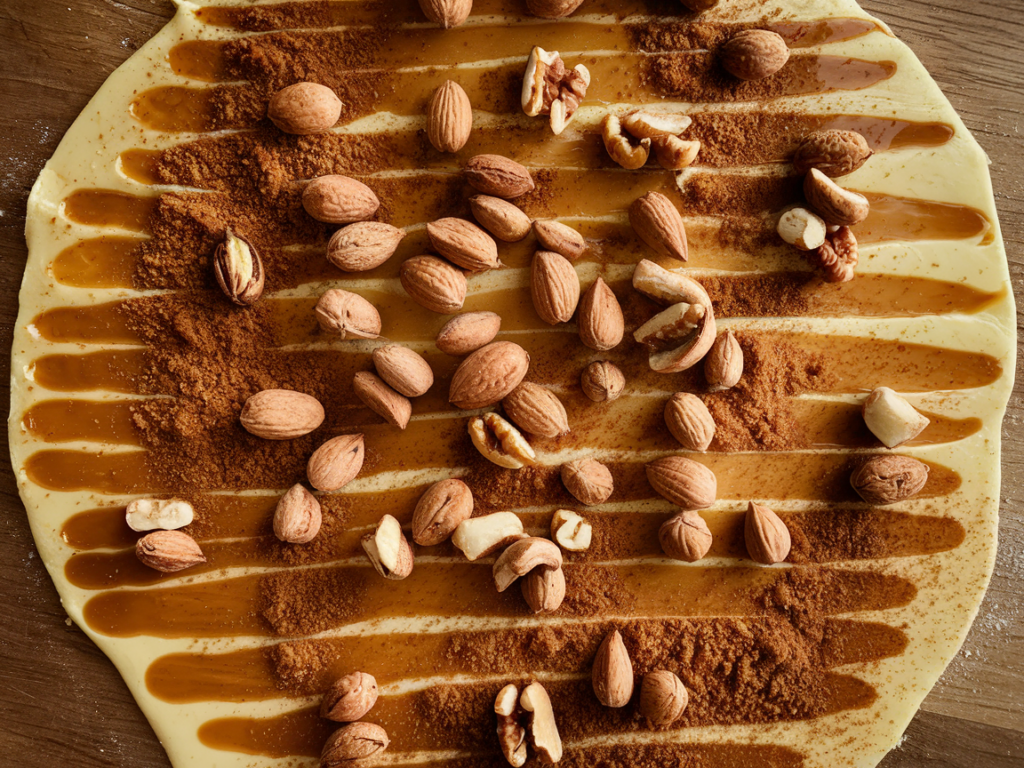
Layering fillings may seem straightforward, but it’s an art. Uneven layering can lead to flavor imbalances and baking mishaps.
Spreading Butter Uniformly
Start with softened butter—not melted. Melted butter tends to run, creating uneven spots and potential leakage. Use a spatula or the back of a spoon to spread the butter in a thin, even layer across the dough.
Mixing and Applying Sugar and Spices
Combine your sugar, cinnamon, and any other spices thoroughly before sprinkling. This ensures even distribution of flavor. When applying the mixture, sprinkle it evenly over the buttered surface, reaching all the edges.
“Think of layering the filling like painting a masterpiece—you want smooth, even strokes.”
Alternative Filling Techniques
If you’re still having trouble keeping fillings in place, these alternative techniques might be your new best friends.
Using a Pastry Bag for Precision
For ultra-precise application, try using a pastry bag to pipe the filling onto the dough. This method ensures even distribution and reduces the chances of overloading certain areas.
Chilling the Dough Before Adding Fillings
Chilled dough is firmer and less likely to tear when spreading fillings. Pop your rolled-out dough into the refrigerator for 10–15 minutes before adding the butter and sugar mixture.
Techniques to Keep Fillings in Place
Rolling the Dough Correctly
Rolling the dough is an art that plays a huge role in keeping fillings in place. First, ensure your dough is rolled out evenly into a rectangular shape. Uneven dough can lead to weak spots where fillings are more likely to spill out. Use a rolling pin and apply consistent pressure to get the perfect sheet.
When it’s time to roll the dough into a log, don’t rush! Roll it tightly but not so tight that the filling gets pushed out. Think of it as rolling up a cozy blanket—you want everything tucked in neatly without squishing it.
Sealing the Edges Properly
Once you’ve rolled up your dough, pay attention to the seam. Use a bit of water or an egg wash to seal the edge securely. This little step acts as glue, keeping the roll intact and preventing the filling from spilling out during baking.
Using the Right Amount of Filling
As tempting as it is to load up your rolls with extra filling, moderation is key. Overstuffing leads to leakage and uneven baking. Stick to a thin, even layer of filling across the dough. Remember, it’s better to have the perfect balance than a sugary mess.
Pro Tip: Sprinkle your sugar and spice mixture in a thin layer, then gently press it into the butter using your hands. This helps the filling adhere better to the dough.
Tips for Preparing the Perfect Dough
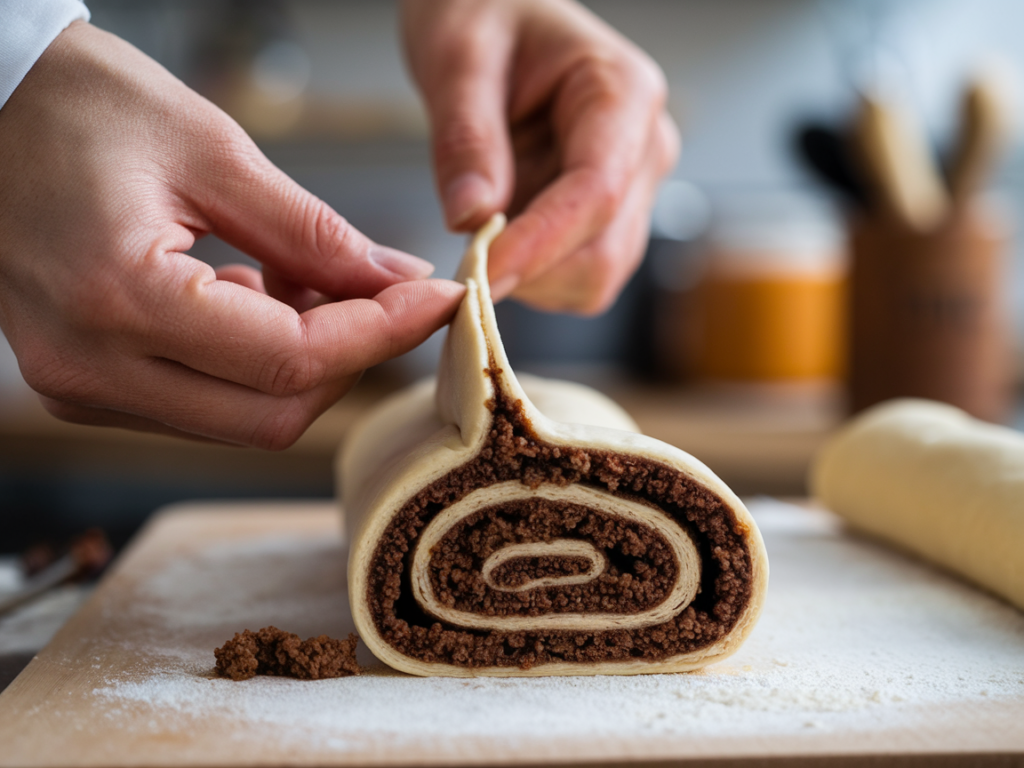
Dough Consistency and Its Role
The dough is the backbone of your cinnamon rolls. It needs to be soft and elastic but not overly sticky. Too much flour can make it dry and unyielding, while too little results in a sticky mess that’s hard to work with. Aim for a dough that’s smooth, pliable, and slightly tacky to the touch.
Think of your dough like clay—it should be easy to mold but not so soft that it collapses.
Letting the Dough Rest for Proper Rolling
Patience is a baker’s best friend. Letting your dough rest before rolling allows the gluten to relax, making it easier to shape. Resting also prevents the dough from springing back as you roll it out. Cover your dough with a damp cloth and let it sit for 10–15 minutes before shaping.
How to Layer Fillings Evenly
Spreading Butter Uniformly
The first step to a perfectly layered filling is spreading the butter evenly across the dough. Use softened butter—not melted—and apply it with an offset spatula or your fingers. Cover every corner to create a sticky base that holds the sugar mixture in place.
Mixing and Applying Sugar and Spices
Once the butter is in place, sprinkle your sugar and spice mixture evenly. For better results, mix the sugar and cinnamon thoroughly beforehand. This ensures that every bite has the perfect blend of sweetness and spice.
Quote to Ponder: “The secret to even filling is treating every corner of the dough like prime real estate.”
Alternative Filling Techniques
Using a Pastry Bag for Precision
If you struggle with evenly spreading fillings, try using a pastry bag. By piping the filling onto the dough, you can ensure an even distribution without accidentally overloading certain areas. This technique works especially well for thinner fillings, like cream cheese or fruit-based mixtures.
Chilling the Dough Before Adding Fillings
Did you know that slightly chilled dough can make your filling process smoother? When the dough is cold, it’s less likely to stretch or tear as you spread the butter and sugar mixture. Simply pop your rolled-out dough into the fridge for 15–20 minutes before adding your filling.
Baking Tips to Prevent Filling Spillage
Controlling Oven Temperature
A consistent oven temperature is essential for preventing filling mishaps. Bake your cinnamon rolls at a moderate temperature (around 350°F or 175°C). Too hot, and the filling might boil over; too low, and the dough may dry out before it fully bakes.
Using Parchment Paper or Lined Pans
Lining your baking pan with parchment paper is an easy way to prevent sticking and messes. If some filling does escape, the parchment paper will catch it, making cleanup a breeze. Plus, it helps the rolls bake evenly, creating that golden-brown perfection.
Pro Tip: If you notice excessive filling pooling in the pan halfway through baking, tilt the pan slightly and spoon out the excess to avoid burning.
Frequently Asked Questions About Cinnamon Roll Fillings
Can You Use Less Sugar Without Compromising Flavor?
Absolutely! If you’re looking for a less sugary option, try using alternative sweeteners like brown sugar or coconut sugar. You can also add natural flavor enhancers like vanilla extract, orange zest, or a pinch of cardamom to make up for the reduced sweetness.
Why Does My Filling Melt and Leak?
Fillings typically leak because of two main issues: too much butter or sugar. If the butter is overly soft or the sugar-to-butter ratio is off, the filling can become too liquidy. Adjust the ratio slightly or incorporate a thickener like flour to create a more stable filling.
Creative Variations on Cinnamon Roll Fillings
Adding Nuts or Fruits to Fillings
Elevate your cinnamon rolls by adding chopped nuts, raisins, or dried fruits to the filling. Pecans or walnuts add a satisfying crunch, while dried cranberries or apricots offer bursts of tangy sweetness.
Experimenting with Savory Fillings
Why stick to sweet? Cinnamon rolls can be just as delicious with savory fillings. Try combinations like spinach and feta, garlic and herb butter, or even pizza-inspired fillings with marinara and cheese. These twists make for an exciting brunch or appetizer option.
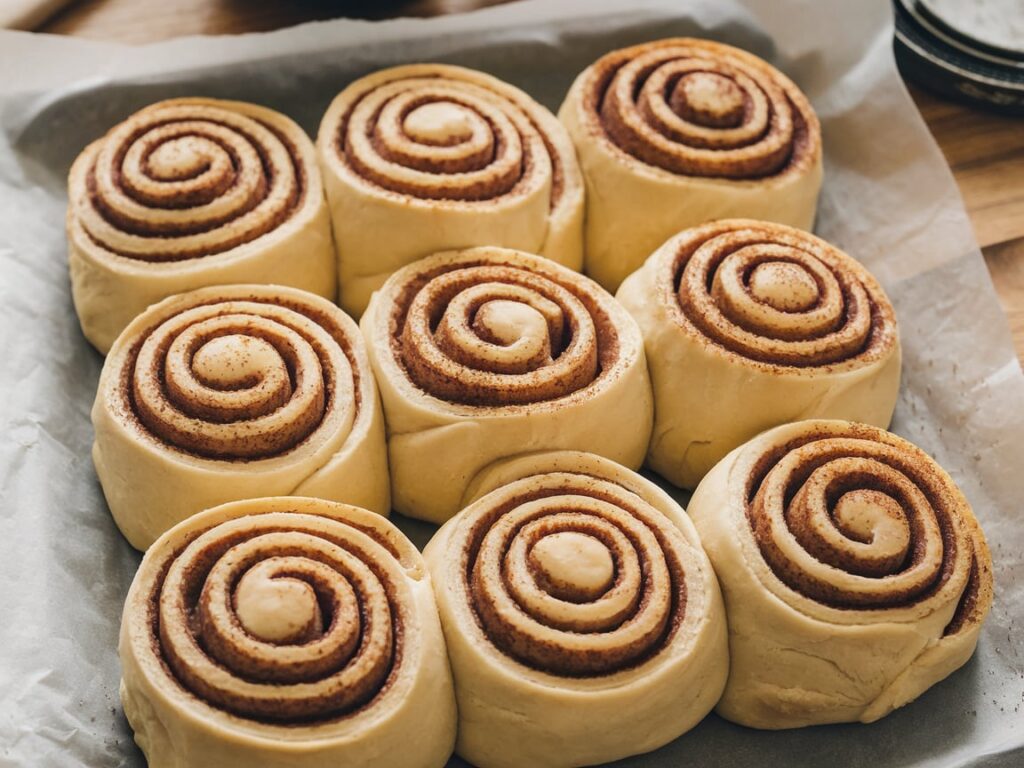
“A savory cinnamon roll is like the cool cousin at the dessert table—it stands out and steals the show.”
Conclusion: Mastering Cinnamon Roll Fillings
There you have it—every tip and trick to keep your cinnamon roll fillings in place! From perfecting your dough to using the right techniques, you’re now armed with the knowledge to create cinnamon rolls that not only look amazing but taste incredible too. Remember, baking is a journey, and each roll you make brings you closer to cinnamon roll perfection.
So, roll up your sleeves, sprinkle some sugar, and bake your way to cinnamon roll mastery. Your kitchen is about to smell like heaven!
Follow these tips, and you’ll be baking Perfect Cinnamon Rolls with ease.
To enhance your recipe experience, check out these related articles from our blog:
- Learn how Cinnamon Rolls with Apple Pie Filling add a fruity twist to your rolls.
- Discover why you should Put Heavy Cream on Cinnamon Rolls Before Baking for extra moisture and flavor.
- Explore whether it’s better to Pre-Cook Apple Pie Filling for consistency and taste.

